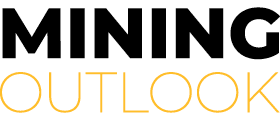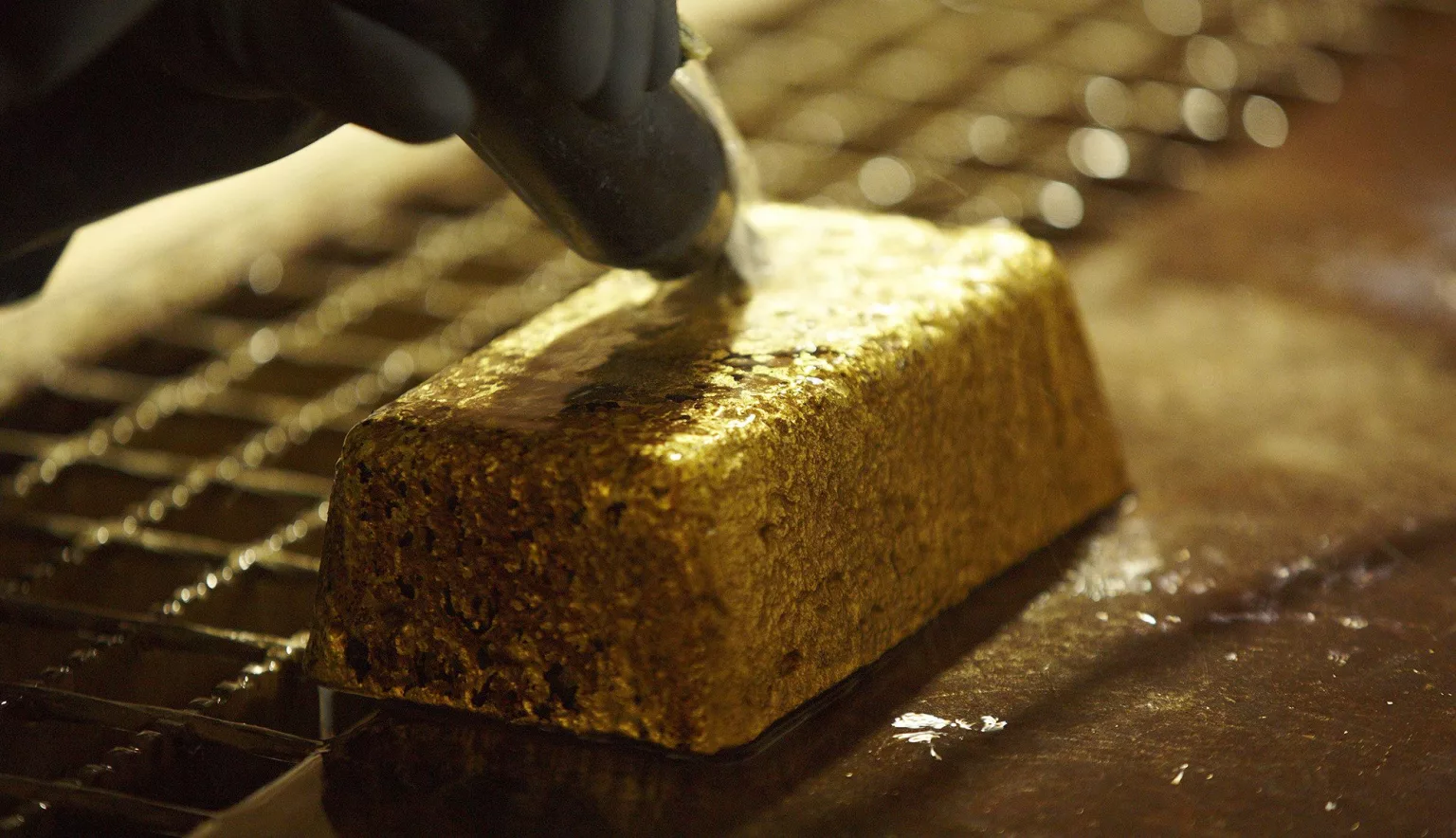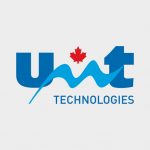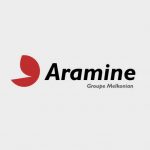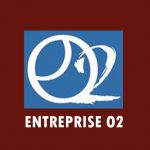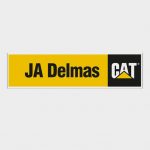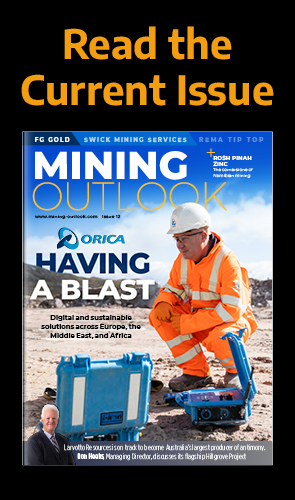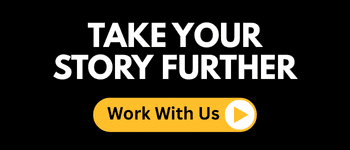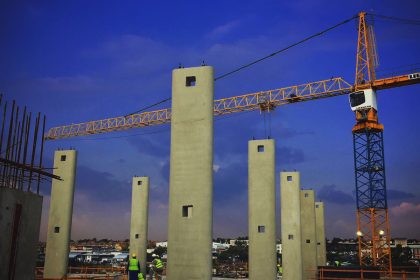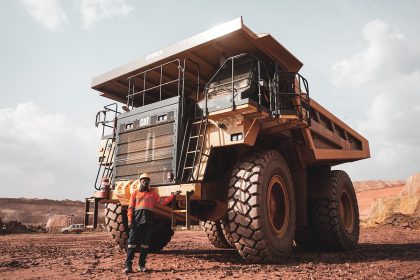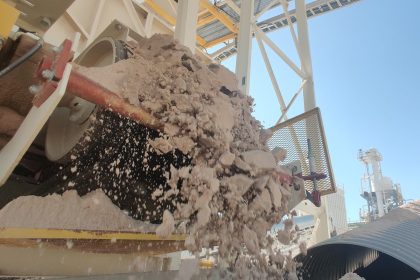INTRODUCTION
“The acquisition of Trelawney in 2012, which brought on the Côté Gold project in Ontario, Canada, is the latest acquisition and brings us to the current look of IAMGOLD today.”
OPERATIONAL AND EXPLORATION SUCCESS
In summary, IAMGOLD’s portfolio currently comprises four operating mines in the form of Rosebel, Westwood, Sadiola and Essakane, in addition to development projects, Côté Gold and Saramacca. The likes of Boto Gold in Senegal, Pitangui in Brazil, Monster Lake, and Nelligan then represent the Company’s burgeoning array of advanced exploration projects.
Stothart explains: “During the downturn, we turned our focus to completing activities that required less capital but were necessary to moving the project forward. This included forming a joint venture with Sumitomo Metal Mining, obtaining environmental assessment approvals, and completing a prefeasibility study. The feasibility study should be completed by the end of this year, with a potential construction start next year. We are targeting a production start for Côté in 2021.
“We also continue to advance Greenfield exploration projects and since the downturn began we confirmed initial resources at five Greenfield projects. Boto in Senegal now has reserves and we are completing a feasibility study so this is potentially a new development project.”
AN INCREDIBLE ASSET
Such global experiences and heightened awareness of industry curves have been pivotal in driving IAMGOLD’s success in Africa, where trends can often be exacerbated; especially as an international entity looking to prove itself as a trustworthy and responsible entrant to a prospective country.
This is where the business’s early ingratiation into the continent via the Sadiola open pit operation in Mali has been critical; paving the way for the later Essakane triumph. As Sadiola winds down with a view to being put into suspension in 2019, the latter Burkina Faso operation is fast becoming IAMGOLD’s flagship African asset.
Ninety percent owned by the Company (the Government of Burkina Faso owning the final 10 percent), Essakane represents a more than 1,200 square kilometre land mass with exponential potential for further regional prospects. Acquired in 2009 and entering production in 2010, further mill expansions since then have made it the largest gold mine in the country, and this is just the start.
“Essakane has been a very successful acquisition for IAMGOLD, which incepted with the acquisition in 2009 and was ramped-up from a production perspective in 2013 when we found a higher percentage of hard rock under the surface, and therefore an extension in terms of the life of the mine,” states Essakane’s General Manager, Bruno Lemelin.
“With this realisation, we also needed to increase the capacity of the mill in order to produce the forecast production levels of around 400,000 gold ounces per annum.
“Taking into account the initial construction conversion, and the subsequent expansion, we have invested nearly $1 billion at Essakane; a major investment not just for IAMGOLD, but for Burkina Faso as a whole.”
Essakane is now thriving as the country’s largest mine, with record production of 432,000 gold ounces in 2017; no mean feat given the complexities of the site itself.
Lemelin continues: “It’s a low grade open pit mine which means we need good volumes to accomplish good yields. Without overemphasising Essakane’s accomplishments to date, I can genuinely say it is an incredible asset and a world-class operation; but by no means is it easy.
“Essakane’s mineral resources are complex, so you need very smart exploration and research in order to understand the mineralisation and how it is distributed in the ground.”
Sound geology expertise, exploration acumen and engineering shrewdness has culminated not only in mitigating the challenges that Essakane presents but has also resulted in a continuous and ongoing expansion of the pit as new opportunities are unearthed.
“Originally there was a mine lifecycle of up to 2020 and over the years we have been able to continuously expand and continue to discover more and more,” Lemelin adds. “Of course, as we’ve found less accessible hard rock deeper down, we have had to be more innovative, and have gone on to implement lots of good engineering attributes and methods in order to extract the minerals.”
A REAL SUCCESS STORY
In terms of this aforementioned, seemingly never-ending expansion that is occurring at Essakane, IAMGOLD has once again demonstrated its willingness and ability to remain agile even amid the most complex and vast of operations.
As initial soft deposits paved the way for more complicated harder rock, the mill was expanded; which, while profitable in terms of boosting capacities, was also more energy consuming than initial projections had accounted for.
“Now we are primarily in this hard rock material , we are working both to stabilise production at over 400,000 gold ounces, and to continuously invest in order to increase capacities, and simultaneously improve efficiencies,” Lemelin states. “It’s a major competitive advantage in the region, and with that we’re looking at ways to find other satellite deposits near the mine. If we can find some smaller ones near Essakane, even though they’re harder, we can extend the life of the mine by a year or two each time and it makes a big difference.”
This is precisely what happened in 2015 when further commercial production was initiated from a satellite deposit near the main pit, and has since evolved to become a “magnificent deposit yielding better grade minerals than the main pit at Essakane”. With a lifecycle of five years, the Falagountou satellite deposit isn’t necessarily ground-breaking in its own right but contributes to the overall prosperity of Essakane and the surrounding region – especially when considering how many of these smaller opportunities exist in the area.
“If we succeed in finding other opportunities like Falagountou then it will help us out more and more with the overall life of the mine,” Lemelin affirms. “We have numerous prospects of land around the mine with a good indication of mineralisation, with projects we’re already working on. This compounds a core pillar of our strategy to make sure we extend the life of the mine as much as we can.
“The second pillar and strategy we have is to understand fully what we have under our feet. There’s an old saying that the best place to find a mine is either next to a mine or under a mine. We have yet to explore all of the main zone and what we did last year is to look at going even deeper to see if there was another expansion project possible for the main pit.”
It wasn’t long before a layer of low grade material was found, sitting above a plethora of high grade minerals, and following the latest injection of smart engineering and mining skills, the Company soon found that a further 1.4 million gold ounces could be added to the reserve projections, increasing the life of the mine by a further three years.
Lemelin enthuses: “The main pit is still very lucrative, we are yet to complete and find everything there, and there is a lot of action ongoing both in the centre and next to the main site. Whereas before we had a life of mine to 2020, this has already gone up to 2023 and now 2026. We are even now looking towards 2030, all the while reducing our costs and ingratiating ourselves locally to make Essakane a real success story.”
INVESTMENTS AND IMPROVEMENTS
Essakane now serves as a perfect example of IAMGOLD’s credentials and ambitions; the expansions and ability to overcome concerted challenges epitomising the Company’s strengths from a mining perspective.
What the project has also done though is serve as a showcase of what the Company is able to achieve from an infrastructural perspective and in terms of embedding itself in a previously unfamiliar location.
As Lemelin noted, extensive investments have been made to realise this notion, beginning with aspects that many outside of the industry would be forgiven for not taking into account.
“For example, when we first started the mine we would try to hire as many people as possible from the local neighbourhood but all the required skills were not readily available here. So Essakane decided to construct a camp outside of the main zone, where people who worked on rotation after travelling back and forth from Ouagadougou could stay,” Lemelin details. “We would have 25-30 people living in the neighbourhood at any one time, and we had a contract with a local transportation company to arrange transport to and from the capital.”
Infrastructural expansion has been every bit as important as each of IAMGOLD’s mine expansions; one not able to stabilise itself without the other. And such capital expenditures have gone on to infiltrate every aspect of an operation, both at Essakane and across each of the Company’s other successful projects.
“At Essakane, we have partnered with Total EREN to construct a 15MWp solar farm made from approximately 130,000 solar panels which was unveiled in March, 2018,” Stothart offers as an example. “This will save the Essakane mine approximately six million litres of fuel a year and eliminate 18,500 tonnes of carbon dioxide each year.
“Additionally, we have constructed a carbon fines treatment plant and intensive leach reactor to improve gold recoveries and reduce gold-in-process inventory. An oxygen plant is planned to be commissioned in Q4 of 2018 to further improve recoveries.”
At Westwood the trend of continuous improvement and modernisation reappears via the introduction of underground electrical equipment; at Côté Gold, the usage of automated haulage and drilling is being explored; as the Saramacca project comes online, an additional fleet will be unveiled at Rosebel; and as part of the LOM planning, an additional fleet will also be required at Essakane in the near future – coming full circle on a whistle-stop tour of just a select few investments and improvements that keep IAMGOLD ahead of the game on a year-by-year basis.
WEATHERING THE STORM
Not only do such investments address the very latest demands and trends from the wider mining world, but they also put IAMGOLD in as strong a position as possible to overcome potential challenges of the future; a lesson that was learned all too dramatically in 2015 as the industry suffered its most troubling period in decades.
Lemelin recalls: “Right after the expansion in 2013 when we decided to build the second production line, the gold price was at $1,600 an ounce, but the minute we finished completing the expansion, the gold price declined to $1,200 an ounce – a 30 percent loss of top line revenues which we did not anticipate.
“For that first year it was a very frightening climate where the gold price was trending towards $1,050 and some predicting it could even go sub-$1,000. At that point you’re very vulnerable!”
IAMGOLD’s reaction was immediate and pertinent, consequently initiating a programme which not only helped stem the tide at that moment, but would also make the Company much more prepared to weather such storms in the future.
“As part of the programme, we went back to the drawing board and announced our “400,000 ounces at $850/oz” initiative to be robust through the price cycle,” Lemelin continues. “We knew that gold prices are cyclical and go up and down. But to be robust when the industry is at its worst, we wanted to never be exposed to a low cycle again. Even though it was bold, it was one of those things where you don’t know it’s possible until you do it. We had a target to aim at and introduced a programme designed to accomplish this target.”
The programme wasn’t unveiled purely to safeguard profits, rather it signified a solidifying of the business’s overall ambitions. With long-term mine lifecycles at its immediate disposal, sustainability is of paramount importance and by stabilising the situation and preparing for the worst, IAMGOLD can now rest easier in the knowledge that it can withstand similar predicaments should the cycle come around again in the future.
Lemelin adds: “Such an approach is also warmly received by the governments of countries we’re operating within. The more we can extract, for as long a time as possible, the more the country receives in taxes and royalties and every type of contribution. It was in our, Burkina Faso’s, the Government’s, and the community’s best interests for us to make sure that Essakane remained on-course and successful, and our programme has ensured this is the case.”
REDUCING COSTS AND IMPROVING PRODUCTIVITY
Naturally, for any company to implement an amendment in strategy or in approach, the full backing of each employee is required. For IAMGOLD though, this realisation was taken up a notch, with the Company using the industry downturn as an opportunity to instil a strong sense of efficiency and wider company sustainability within each member of staff.
“We had to train people on the methodology because it’s okay to say to a person that we have to cut costs, but if you don’t give them a toolbox of ways to discuss it then the preaching is aimless,” Lemelin says. “We therefore implemented lean Six Sigma methodologies within a training programme that was given to all 2,200 employees on site. It was a bold plan, took three-four years, and was presented in different ways to different individuals, but the end result was the same – to raise awareness of the implications of reducing costs and improving productivity.”
In 2017 the rewards of this initiative were already being reaped to the tune of $8 million in savings.
Lemelin enthuses: “It may take a while but you have to stay the course in order to see these benefits. It’s a case of effective execution from start to finish, but then also – importantly – celebrating the success of achieving the goal.
“At the mine, every single day we wake up and have to solve problems. So if we don’t celebrate successes like the effectiveness of this training programme, then we’re promoting a negative culture where nothing ever reaches a point of success. It’s important that people understand and acknowledge when we’re getting better or when we’ve accomplished something so that they know we’re heading in the right direction, largely thanks to their contribution.”
Improving efficiencies, reducing costs and becoming more sustainable can often be brought about by necessity, as was the case with IAMGOLD’s situation in Africa, but can quite often turn into a longer-term, more positive way of conducting business. Since being forced into taking this path out of necessity, the Company can now report heightened efficiencies, and a greater respect for resources and the effects their profitability can have not only on the Company, but on the surrounding communities and even the wider country as well.
Stothart elaborates: “The Company continues to focus on productivity and on optimising costs, backed up by strong technical analysis, while maximising throughput of the plant and minimising capital investment.
“IAMGOLD likes to construct most of its own projects, and for projects it does not construct it still provides a significant amount of input and insight into the development. This allows the Company to perform a significant amount of detailed risk analysis and focus on how to best protect itself from the downside of projects.
“Over the years, we have focused on identifying numerous opportunities to reduce both operating and capital costs during the mine design and mine planning process.”
SHARE THE WEALTH
When discussing the idea of sustainability, Lemelin is keen and quick to clarify that this doesn’t just encapsulate the notion of environment and CSR-related activities that are often highlighted in these instances.
Rather he emphasises the fusion of business and community-based initiatives, a blend of local ingratiation and more business-typifying economic drivers.
“You need to share the wealth and that’s exactly what we’re doing,” he says. “We’re strongly invested in the local communities around Essakane to make sure we retain strong ties with stakeholders and understand their needs. Mining is a non-renewable resource, so you have to have the diligence and find a responsible way of managing the resources.
“You only get one good shot at it. And when you’re done you want to know that the communities are better off, and that the mineral rent has improved their situation. We never stop thinking about that.”
In proving its sensitivity to the local cause and in cementing its position as a locally responsible operator, IAMGOLD has fostered a harmonious, communicative, collaborative relationship with the local community; who in turn realise that the ongoing success of Essakane will directly, and positively, impact their own lives.
Consequently, with becoming an employer and business partner of choice, a goal is becoming realised to ensure that when the mine does one day shut down, IAMGOLD’s legacy will remain.
“When the mine shuts down, the local economy will survive and will live on, which is what sustainability means in essence,” Lemelin adds. “And then, to cater for more stereotypical elements of corporate social responsibility, we have a committed team who work within the communities and implement programmes. There is a myriad of things we do in this area, but two leading examples include the building of a water treatment unit which will improve access to safe running water for more than 150,000 people in the area; and in terms of education, an initiative which saw two young women receive scholarships at one of the finest polytechnics in Canada.”
SUPPORTING THE GROWTH OF THE MINING SECTOR
Casting an eye forward, in refining and honing each area of the Company’s internal functions, the business is in as strong a position as ever to capitalise on the opportunities that exist in Africa, and indeed across gold mining’s global climate.
“West Africa is a highly prospective region for gold and other minerals,” Toguyeni confirms. “The region remains under-explored and there is potential to find more resources. In order for this to happen, it is important that host governments and policy makers ensure that the legal frameworks remain attractive for potential investors and provide some level of predictability to mining companies who often face price volatility for metals.
“In our interactions with governments and lawmakers in the countries where we operate, we place the emphasis on finding the right balance to support the growth of the mining sector through a better integration of the mining sector in local economies, while also ensuring we develop sustainable projects which will benefit communities and the country beyond the closure of the mine.”
The Company’s internal stability also makes it more resistant to any additional, potentially unforeseen industry challenges as well, as Stothart describes by way of examples.
“Reserve depletion is the number one challenge for the industry in our opinion,” he says. “The reason that the industry is having a challenging time replacing reserves is that it cut back too much on exploration spending during the downturn. Plus, the easy deposits have been found. It’s critical to replace your gold reserves to stay in the game. Our gold reserves increased by 86 percent in 2017, so it’s essential that other companies continue to invest in exploration.
“Another trend we’re monitoring and adapting to is digital mining, which has a lot of potential within the industry, so we need to be embedding digital thinking into our strategies. At IAMGOLD as we move forward with our Côté Gold Project we will be looking at ways to incorporate digital mining into our operation. Simultaneously, we are looking at the opportunity to increase productivity of our existing mines through automation.”
EXCEEDING EXPECTATIONS
Above all though, what motivates IAMGOLD most is an unwavering dedication to health & safety; applicable to its employees, the local communities and everyone involved with each process of every mine. As Stothart sums up aptly: “Zero Harm drives IAMGOLD!”.
He adds: “It is our commitment to continually strive to reach the highest standards in human health & safety, to minimise our impact on the environment, and to work cooperatively with our host communities. We are committed to forming partnerships with our local communities while making a positive impact.
“For example, in Burkina Faso we continue our commitment to providing clean water access to surrounding communities. In Suriname we are committed to public education and health, having constructed classrooms and health clinics. We strive to leave behind a positive legacy for our communities to continue to prosper long after our mines are closed.”
